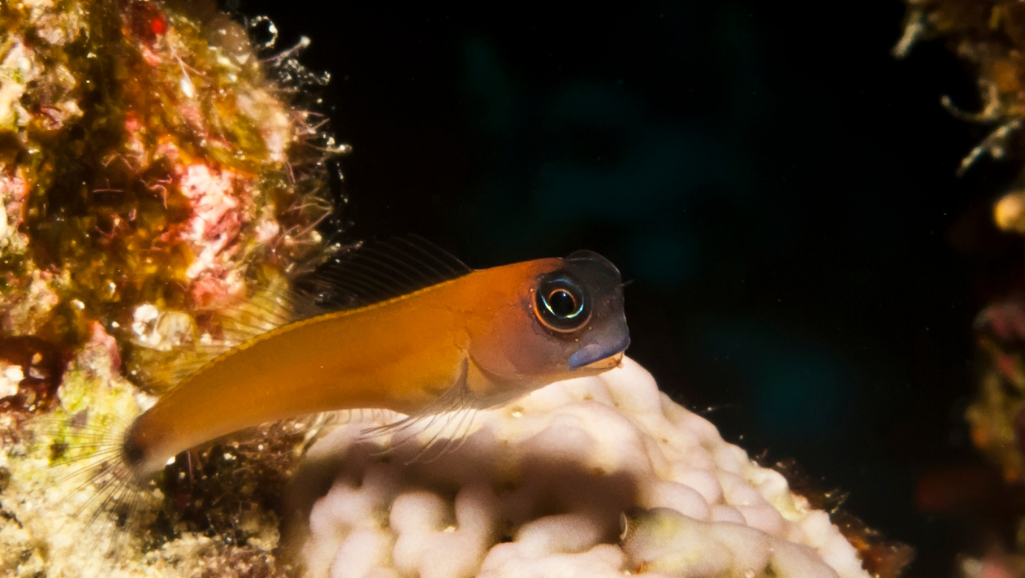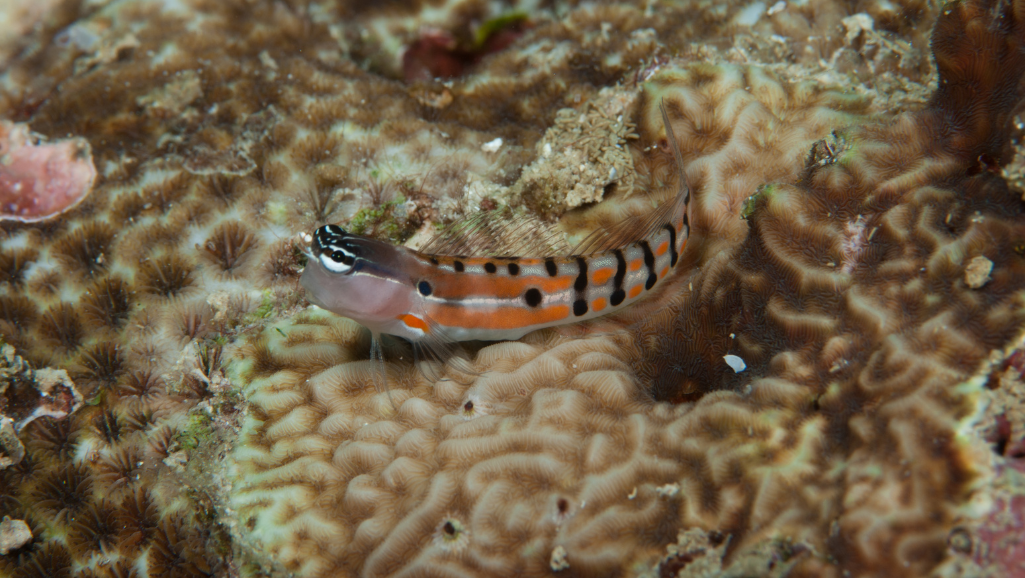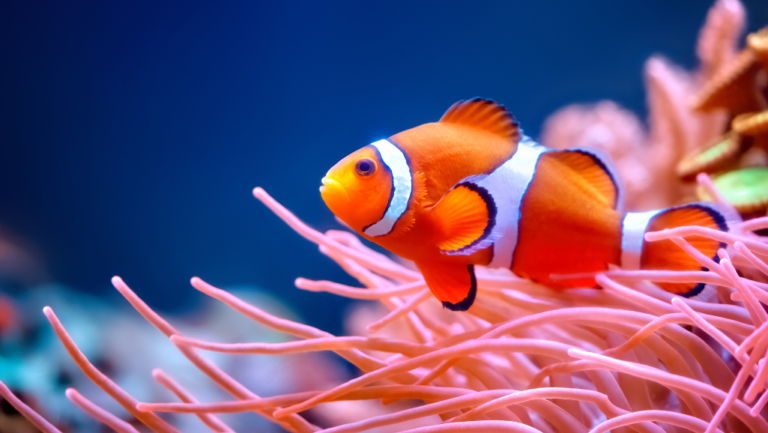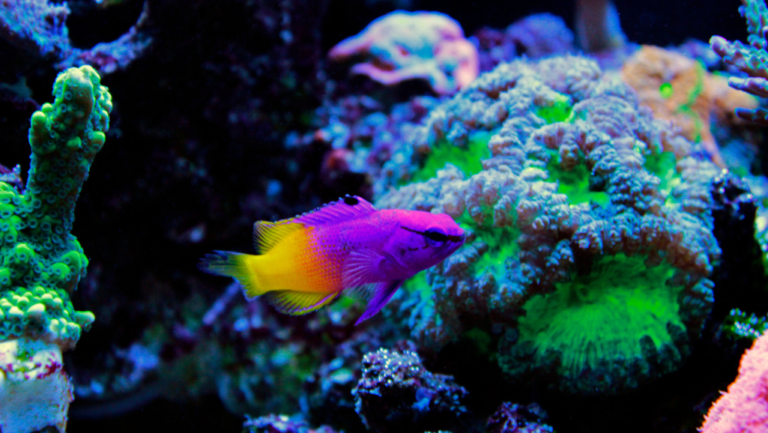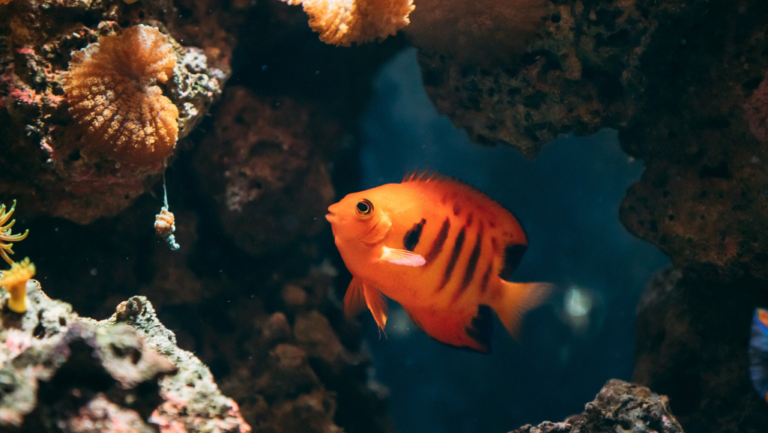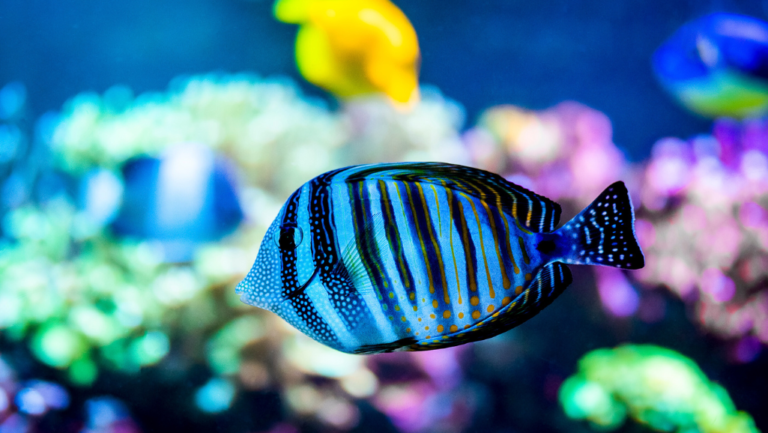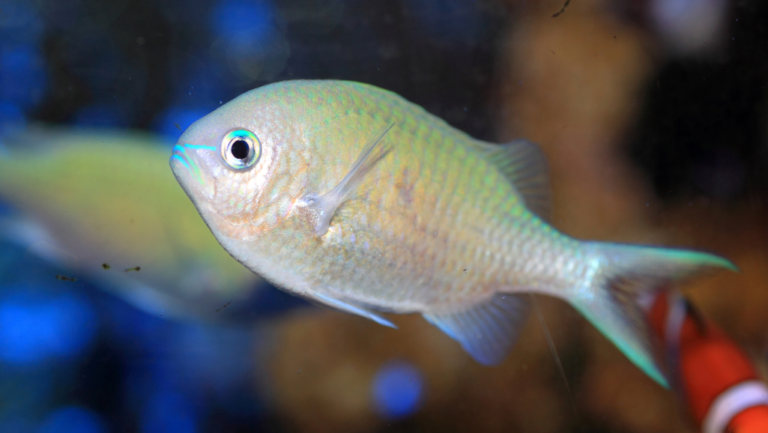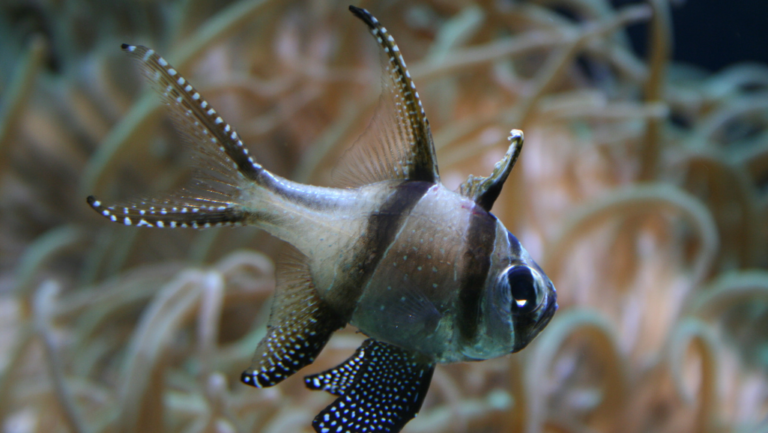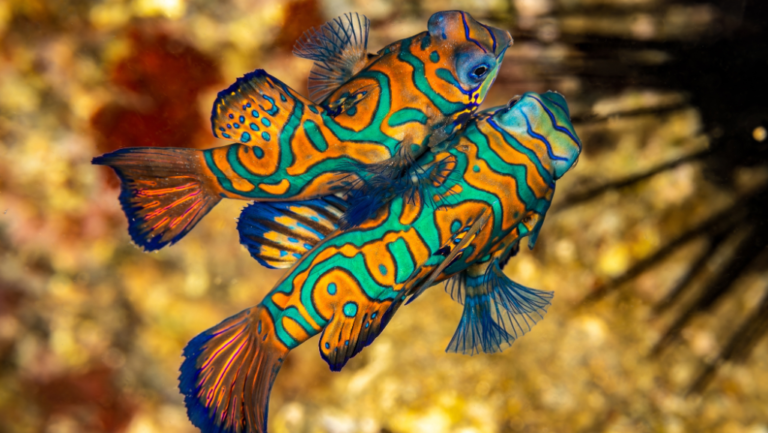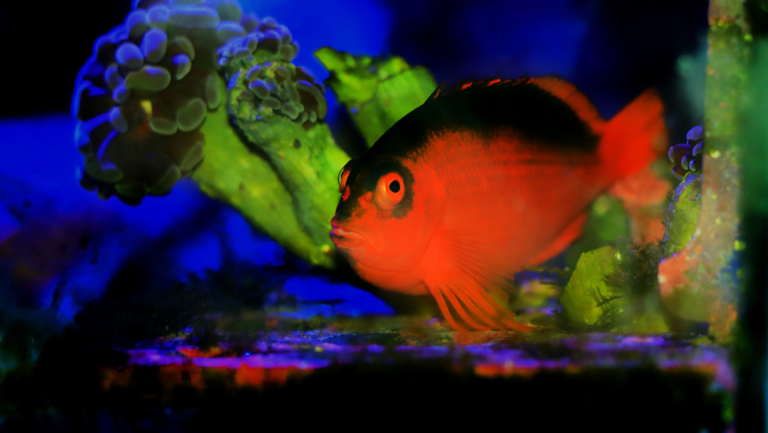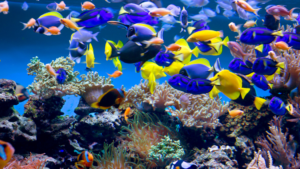The blenny is a standout in marine life, known for its striking presence in reefs and aquariums. It has many species, each with its own personality and behaviors. This makes it a favorite in any home aquarium.
These creatures are known for their big appetites and peaceful nature. They also have a unique look that people find cute and comical.
Key Takeaways
- Blennies represent a highly diverse group, with some 833 species across 130 genera.
- Many blenny varieties such as the Triplefin, Sand Stargazer, and Fang Blenny offer unique characteristics and adaptations.
- The blenny’s suitability for smaller tanks makes them exemplary for diverse living spaces.
- These low-maintenance fish accommodate a wide range of diets, increasing their popularity in home aquariums.
- Blenny species offer a spectrum of care levels, catering to both novice and experienced aquarists alike.
- Venomous blenny species contribute an aspect of the wild to the controlled environment of home aquariums.
- Understanding the social and territorial nuances of blennies is key for a harmonious tank community.
Introduction to Blennies
Exploring the world of blennies reveals a diverse group of fish. They live in both marine and freshwater environments. Blennies are known for their unique ways of adapting and behaving.
Blenny behavior shows how adaptable they are. Many species burrow and mimic other creatures to avoid predators. Their habitats range from coral reefs to sandy bottoms, playing a key role in their ecosystems.
What Are Blennies?
Blennies have long bodies, bright colors, and unique dorsal fins. They often perch on rocks or coral, watching their territory or hunting for food. Their behaviors, from mating dances to nest protection, fascinate both aquarists and researchers.
Types of Blennies
Looking into different types of blennies shows a wide variety. Some, like combtooth blennies, eat algae, while others mimic other fish. Each type has its own way of living in its environment.
Studies, like those by Scott W. Michael, help us understand blenny behavior. They show how blennies interact with their surroundings. This makes them important in the ocean and interesting to aquarium fans everywhere.
Habitat and Natural Environment
The blenny, a small but vibrant fish, thrives in diverse blenny habitats around the world. They live in tropical to temperate seas. Places like rocky pools, sandy beaches, and reef ecosystems are their homes. These places offer the complex structures and resources they need to survive and reproduce.
Blennies are often found in reef ecosystems. They live among corals and rocks, using their pectoral fins to move around. Their presence in these habitats shows their ecological versatility and their role in the marine food web. As benthic creatures, they feed on various benthic organisms, contributing to the ecological balance.
Reef Ecosystems
In reef ecosystems, blennies adapt and thrive remarkably. They avoid larger predators while accessing plenty of food. The colorful fish of the reefs, including blennies, enhance the visual beauty and balance of these ecosystems.
Geographical Distribution
Blennies are found in the Pacific, Atlantic, and Indian oceans, and the Mediterranean Sea. Their wide distribution shows their adaptability and resilience. They thrive in various environments, from shallow intertidal zones to deeper waters up to 450 meters.
When choosing blenny tank mates, it’s key to remember their peaceful nature. To set up an aquarium for blennies, include plenty of rocks and crevices. This setup supports their natural behavior and ensures they get along with other marine species, making aquarium care rewarding.
In summary, knowing about blenny habitats and distribution is vital for both ecological studies and aquarium enthusiasts. Their diverse presence across global waters makes them fascinating subjects of study. They are also beloved in marine aquariums, where their unique behaviors and compatibility with various blenny tank mates can be enjoyed in a controlled environment.
Care Requirements in Aquariums
Proper care for blennies in aquariums means paying close attention to their habitat, water quality, and diet. Good blenny care boosts their health and color, making them thrive in their new home.
Tank Size and Setup
Blennies need at least a 30-gallon tank for their burrowing and swimming. A setup that looks like their natural reef home is best. It should have lots of rocks and caves for them to hide and explore.
This kind of habitat is good for their physical and mental health.
Water Parameters
Keeping the water right is key for blenny care. They like temperatures between 72-78°F. They also need saltwater with a salinity of 1.020-1.025 and a pH of 8.0-8.4.
Checking and keeping these parameters stable is important. It helps create a home that feels like their natural habitat.
Diet and Nutrition
The blenny diet can vary by species. Some like plants, while others prefer meat or a mix. In tanks, they eat prepared foods like flakes and pellets made for marine fish.
Adding fresh veggies or meat to their diet is also important. It helps keep their nutrition balanced.
- Lawnmower blennies, a popular species, do well in tanks as small as 30 gallons with parameters such as a pH of 8-8.4.
- These comical creatures are simplistic in diet, often grazing on tank algae and supplemented foods.
Following these care tips can make your blenny healthier and add life and color to your aquarium. For more tips on keeping your aquarium vibrant and healthy, check out these resources.
Popular Blenny Species for Aquariums
Blennies are a diverse group, but some species are more popular than others. They are loved for their unique traits and how they help keep tanks healthy. Let’s look at three favorites.
Lawnmower Blenny
The Lawnmower Blenny, or Salarias fasciatus, is a favorite for its amazing algae-eating skills. It comes from the Indo-Pacific and keeps algae under control. It also adds fun to your tank.
These blennies grow to 4-5 inches and need tanks of at least 30 gallons. They thrive in conditions that match their natural homes.
Cherub Blenny
The Cherub Blenny is a bright and lively addition to any tank. It’s small but full of personality. They’re great for smaller tanks that mimic their Caribbean reefs.
They’re peaceful and make good tank mates for many other marine species.
Tailspot Blenny
The Tailspot Blenny is known for its dark spot at the tail base. It’s a great choice for beginners because it’s small and easy to care for. They grow to 2-3 inches and fit well in 10-gallon tanks.
They eat algae and are calm, making them perfect for clean and peaceful tanks.
Blennies like the Lawnmower, Cherub, and Tailspot add special touches to aquariums. They show why blennies are a aquarium favorite.
Behavior and Interaction
Exploring blenny behavior in their environment is truly captivating. Blennies, found in tide pools and reefs, show a variety of behaviors. They bond socially and can also be territorial.
Social Structure
Blenny social dynamics are quite interesting. Species like the Cocos frill goby and the Eastern jumping blenny have complex social hierarchies. They dominate the rockpool habitats of south eastern Australia, where scientists have studied their interactions closely.
Blennies are usually peaceful but can get competitive over shelter and mating sites. This shows a clear social ladder in their communities.
Territoriality
Blenny territorial behavior changes based on their environment and species. For example, the Redlip Blenny (Ophioblennius atlanticus) is moderately territorial. It chases away other fish if they get too close to its burrow.
This behavior highlights the importance of territory for feeding, breeding, and shelter. Interestingly, this species is more tolerant of other blennies near its burrow. This tolerance helps them live together despite competition.
Compatibility with Other Fish
It’s important for blennies to get along with other fish in an aquarium or natural habitat. Blennies generally get along with many fish species. But, they should not be kept with large, predatory fish.
Blennies can adapt to their surroundings, but their interactions with other fish might change their habitat choice. For example, they might move away from aggressive gobies. This adaptability makes blennies a great addition to community tanks, adding to the tank’s lively atmosphere.
Breeding Blennies in Captivity
Breeding blennies in captivity helps the aquarist community. It provides more sustainable fish populations. Learning about breeding blennies improves blenny care and understanding their lifecycle.
To start breeding blennies, you need to mimic their natural cues. For example, warmer water can signal them to spawn. This shows how important it is to keep the tank conditions right for breeding.
Mating Rituals
Blennies have unique mating rituals. These rituals depend on specific environmental triggers and tank conditions. For instance, certain light cycles and temperature changes can help them spawn like in their natural habitat.
Fry Care and Development
After spawning, caring for the fry is key. Fry survival is a big challenge, with critical times at three days and two to three weeks post-hatch. They need a diet of phytoplankton and rotifers, then copepods and special foods as they grow.
To help fry survive, advanced aquarists suggest removing adult blennies from the tank. This prevents them from eating the fry. Adding algae and biofilm with commercial formulas also helps the young during their early days.
ORA Farms and BIOTA have successfully bred Meiacanthus species. They show the importance of proper breeding programs. They suggest tank sizes from 15 gallons for a pair to 30 gallons or more for groups, which is key for successful breeding at home.
While breeding blennies comes with challenges, knowing how to manage their needs increases success. By learning about breeding blennies, aquarists help marine biodiversity and enjoy these amazing creatures more.
Conclusion: Why Choose a Blenny for Your Aquarium?
Blenny fish are great for both new and experienced aquarium owners. They have a fun personality and are easy to care for. With over 900 types, each blenny adds something special to your tank.
Blennies can live in many different aquariums if their needs are met. This makes them a smart choice for your underwater world.
Unique Traits and Benefits
Blennies stand out for their fun antics and unique features. They are small, usually 3-5 inches long, and can live for 3-5 years. Sometimes, they can even live up to 10 years.
To keep them healthy, you need to keep the water at 72-82°F (22-28°C). The pH should be between 7.8 and 8.4, and the salinity should be 1.020 to 1.025. They eat a variety of foods, from algae to commercial pellets, making their care easy.
Final Thoughts on Blennies
When thinking about getting a blenny, remember they need at least a 30-gallon tank. This size ensures they have enough room to swim and claim their territory. Good tank mates include tangs, clownfish, and gobies.
Regular water changes and monitoring the tank’s parameters are key to keeping your blenny healthy. Blennies are not only entertaining but also add to the diversity of your aquarium. They are easy to add to an existing tank, making them a wonderful choice for any aquarium.

